Search alphabetically (by title):
- ALL
- #
- 0
- 1
- 2
- 3
- 4
- 5
- 6
- 7
- 8
- 9
- A
- B
- C
- D
- E
- F
- G
- H
- I
- J
- K
- L
- M
- N
- O
- P
- Q
- R
- S
- T
- U
- V
- W
- X
- Y
- Z
Titles
Jonathan Goodman
|
Filed under: True Crime, True Crime History
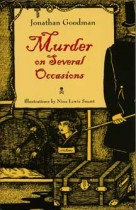
With the author as detective, each of Goodman’s essays examines a particularly notorious murder and subsequent trial. He introduces the readers to the 1923 shooting at the Savoy Hotel in London of Prince Ali Kamel Fahmy Bey at the hands of his wife, Madame Marie-Marguerite Fahmy; he revisits the “Crime of the Century,” the kidnapping of the Lindbergh baby in March 1932 allegedly by Bruno Richard Hauptmann, and his subsequent execution for this crime, even though this case against Hauptmann has come under scrutiny; and he explores the 1980 serial killings committed by Michele de Marco Lupo, a gay man who coaxed other homosexuals to meet with him, then strangled and savagely bit them.
Filed under: True Crime, True Crime History
Allan Pinkerton
|
Filed under: Black Squirrel Books, Classic Detective Stories, Criminal Investigation

Captain J. N. Sumner from Springfield, Massachusetts, hires Pinkerton to help solve a crime involving his sisters and the deed to a family farm. His younger sister Annie falls under the charms of a married man, Mr. Pattmore, who promises to marry Annie once his wife and her brother are out of the way. Captain Sumner possesses an opal ring with a stone that appears to foretell events. After suddenly falling violently ill, he becomes convinced his sister is trying to poison him to get his fortune and, more importantly, his ring.
Tags: allen pinkerton, detective, pinkerton, True Crime Filed under: Black Squirrel Books, Classic Detective Stories, Criminal Investigation
William N. Osborne
|
Filed under: Regional Interest
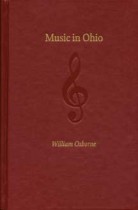
Music in Ohio offers a comprehensive and ambitious look at music as it has been practiced throughout the state during the last two centuries—from folk to jazz to rock to polka. Author William N. Osborne also examines the music of the Moravians, Mormons, and Welsh, as well as other religious music and choral music. He discusses the state’s two major symphony orchestras, the Cincinnati Opera, and the May Festival. He also includes an overview of public school music-education programs and those of the principal collegiate institutions.
Filed under: Regional Interest
John Vacha
|
Filed under: Cleveland Theater, Regional Interest, Theater Studies
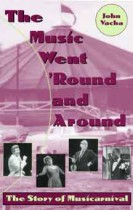
Spotting a trend in the early 1950s of staging summer theater in the round under tents, Clevelander John L. Price Jr. decided to give it a try. Consulting a local statistician to determine the geographical center of the culturally inclined population, the bull’s-eye fell in Warrensville Heights, a Cleveland suburb that was also the home to Thistledown Race Track. Price opened his Musicarnival there, on the grounds of the race track, with a production of Oklahoma! in the summer of 1954. The Music Went ’Round and Around tells the story of this unique summer theater and of its ebullient founder, John L. Price Jr.
Filed under: Cleveland Theater, Regional Interest, Theater Studies
Albert Borowitz
|
Filed under: True Crime, True Crime History
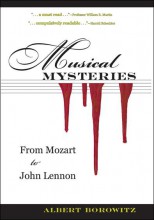
Crime has formed the basis of countless plots in music theater and opera. Several famous composers were murder victims or believed to be murdered, and one of the greatest Renaissance composers slaughtered his wife and her lover. In Musical Mysteries, renowned true crime historian Albert Borowitz turns his attention to the long and complex history of music and crime. The book is divided into two parts. The first addresses three aspects of musical crime: the clashes between envious and competitive musicians, the recurrent question of whether genius and criminality can coexist in the same soul, and the jarring contrast between the creative artist and the violent melodrama of everyday life. Borowitz explores eight infamous crimes and crime legends, including the suspected killing of Robert Cambert by his rival, opera composer Jean-Baptiste Lully; the lurid slaying by sixteenth-century madrigal composer Carlo Gesualdo of his unfaithful wife; Wolfgang Amadeus Mozart’s supposed murder at the hands of Antonio Salieri; and the stalking and murder of John Lennon by Mark Chapman. The second part examines crimes in music, looking at such diverse examples as the “Song of Lamech”, the second biblical killer; the preoccupation of the Gilbert and Sullivan operettas with corporate law and fraud; and the violent character of Jud Fry in Rodgers and Hammerstein’s Oklahoma!
Filed under: True Crime, True Crime History
Denise Seachrist
|
Filed under: Biography, Discover Black History
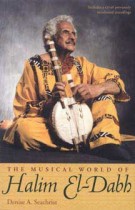
Egyptian-born composer Halim El-Dabh has studied with the giants of 20th-centruy musical composition and conducting. Although The Musical World of Halim El-Dabh focuses on his career from his arrival in the U.S. in 1950 to his retirement from the faculty of Kent State University in 1991, his early life in Egypt, its influence on him musically, and his creative life following retirement are also presented.
Filed under: Biography, Discover Black History
Paul Taylor
|
Filed under: Civil War Era, Interpreting the Civil War: Texts and Contexts

More than 150 years after the end of the Civil War, West Point engineer and Brevet Brigadier General Orlando M. Poe (1832–1895) remains one of the Union’s most unsung heroes. He served the Union in uniform from day one of the conflict until the Confederate surrender in North Carolina in late April 1865, and he used his unparalleled ability to predict Confederate movements to lead multiple successful campaigns that turned the tide of the war. Accordingly, the roar of battle permeates this collection of 241 highly literate and previously unpublished wartime letters to his wife, Eleanor Brent Poe.
Tags: american civil war, Letters Filed under: Civil War Era, Interpreting the Civil War: Texts and Contexts
Noreen Sippola Fairburn
|
Filed under: Regional Interest, Voices of Diversity
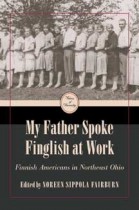
The Finnish American Heritage Association of Ashtabula County was organized in 1995, and one of its first projects was the interviewing and taping of elderly Finnish Americans to obtain historical accounts of early immigrants. These first-person accounts were written as the narrator told them. Many of the first- and second-generation Finns were in their eighties or nineties at the time of their interviews, yet their recollections of times gone by were told with frankness and clarity. Photographs representative of these early years are also included in this volume.
Filed under: Regional Interest, Voices of Diversity
Mark A. Snell
|
Filed under: Audiobooks, Civil War Era, Understanding Civil War History
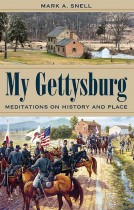
The Gettysburg Campaign and its culminating battle have generated more than their share of analysis and published works. In My Gettysburg, Civil War scholar and twenty-six-year Gettysburg resident Mark Snell goes beyond the campaign itself to explore the “culture” of the battlefield. In this fascinating collection, Snell provides an intriguing interpretation of some neglected military aspects of the battle, such as a revisionist study of Judson Kilpatrick’s decision to launch “Farnsworth’s Charge” on the southern end of the Confederate line after Pickett’s Charge and the role of Union logisticians in the Northern victory.
Filed under: Audiobooks, Civil War Era, Understanding Civil War History
Murray Goodman and Leonard Lewin
|
Filed under: Sports, Writing Sports

First published in 1948, My Greatest Day in Football is a collection of reminiscences and stories from football’s early stars. College football games were the most memorable moments for many of these players and coaches, though some highlight professional and even high school games. Sam “Slingin’ Sammy” Baugh recounts the National League Championship game played at Wrigley Field during his rookie season; Felix A. “Doc” Blanchard, nicknamed “Mr. Inside” for his powerful running attack, describes the triumphant day when Army ended its thirteen-year losing streak to Notre Dame; and Glenn Scobie “Pop” Warner explains why a tough battle against Cal was his greatest day, even though his Stanford team was not victorious. George “the Gipper” Gipp, Knute Rockne, and Paul Brown, who perhaps provides the most surprising game of all, are all included in My Greatest Day in Football.
Filed under: Sports, Writing Sports
Subject/Title category archive











